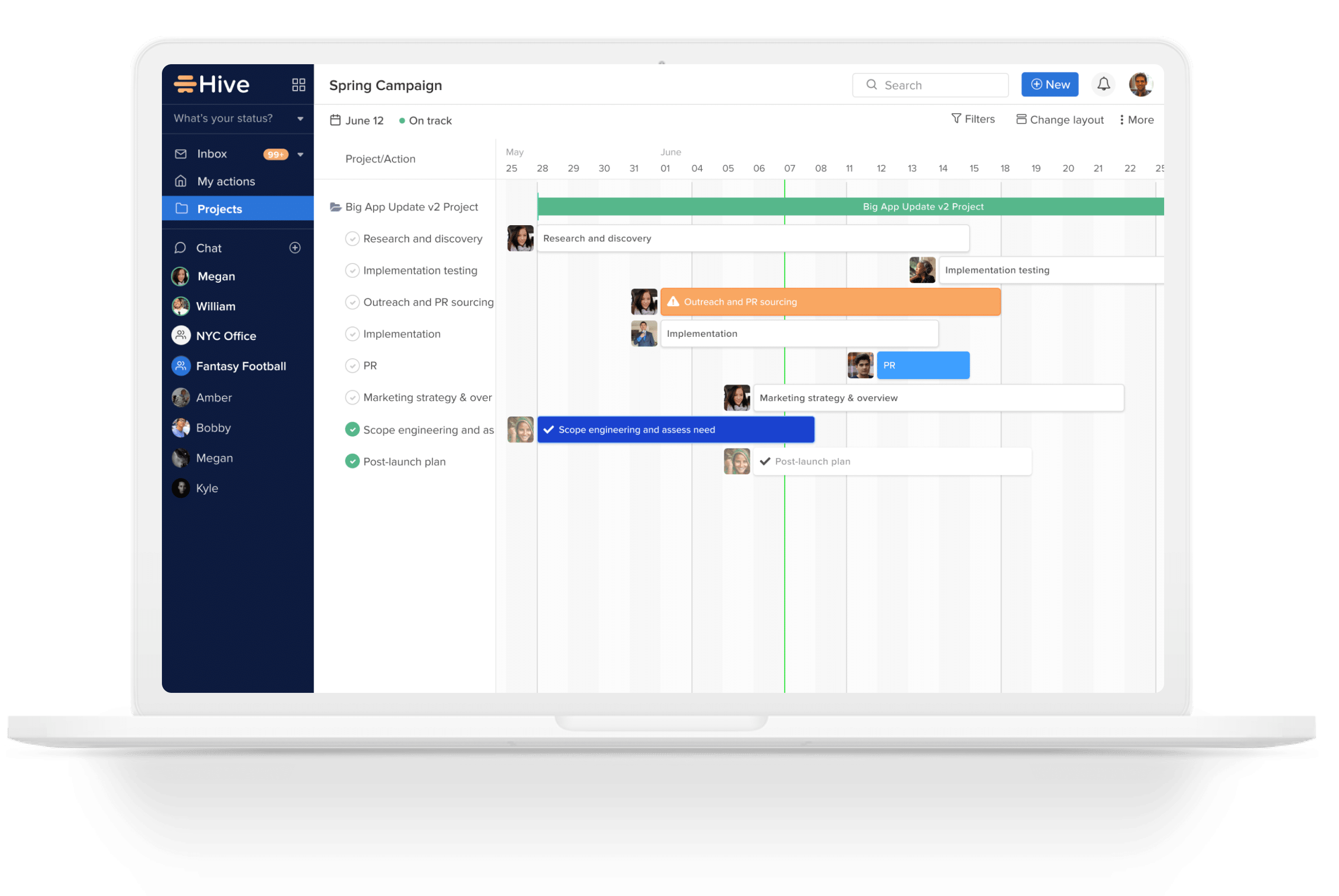
8 Best Project Management Tools To Improve Productivity
In this era of remote work, project management tools are more important than ever before — and making sure you choose the absolute best project management tool is just as critical. By definition, project management tools are apps that allow you to successfully manage, plan, and execute projects and campaigns. Typically, they are used by teams ranging in size from three to 30,000 — the larger the team, the increased need for a powerful project management tool that can keep everyone connected without added stress. Choosing an appropriate project management tool can greatly impact project success. So to help you make the best decision for your team, we are breaking down the best project management tools and their features.
Project management tools are great because they:
1. Are a centralized place for everyone to communicate.
This is critical during a time of remote work, as people will not be able to communicate in-person. Having one, centralized tool where everyone can collaborate and talk about shared projects and tasks improves productivity and saves teams a ton of time. Gone are the days when you had to spend time flipping back and forth between Gchat, Slack, Teams, and Gmail. With a project management tool, you can collaborate in one place.
2. Hold people accountable.
When you’re using a planning and project management tool, you’re automatically setting goals for yourself, your team, and your organization. This helps everyone understand what they need to achieve and how they can get there. Without a place to store this information, goals might not be as obvious or might not be reinforced as frequently.
3. Help plan for the future.
Using methodologies like agile, scrum, and scrumban help set your team up for success in the long run. Planning helps to give your team clear directions and limits distractions, as you have marching orders and a path forward. Overall, planning can help businesses grow 30% faster.
If you’re in the market to try one of the best project management tools, you’re in luck, because we’ve rounded up some of the best tools for you and your team to reach peak productivity.
1. Hive

Hive is a powerful project management tool used by teams at Google, Starbucks, Comcast, Toyota, Anheuser Busch, and more. This app is used at organizations of all sizes, from startups and nonprofits to companies of 100,000. It’s one of the best project management tools on the market because it lets you work your way with customizable project views and over 1,000 integrations.
Hive’s features include:
- Flexible project views, including Gantt, Kanban, calendar, table, and portfolio view
- Ability to add comments, sub-actions, dependencies, and attachments to action cards
- Time-tracking and timesheets capabilities
- Resourcing functionalities
- Integrations with over 1,000 tools like Jira, Gmail, Zoom and Salesforce
- Native chat and email integrations that allow increased connectivity
- Detailed, real-time analytics
- Web and desktop apps
Pricing for Hive: Starts as low as $12 per user, per month.
Try Hive for free for 14 days here.
Learn how other companies are using Hive.
2. Trello
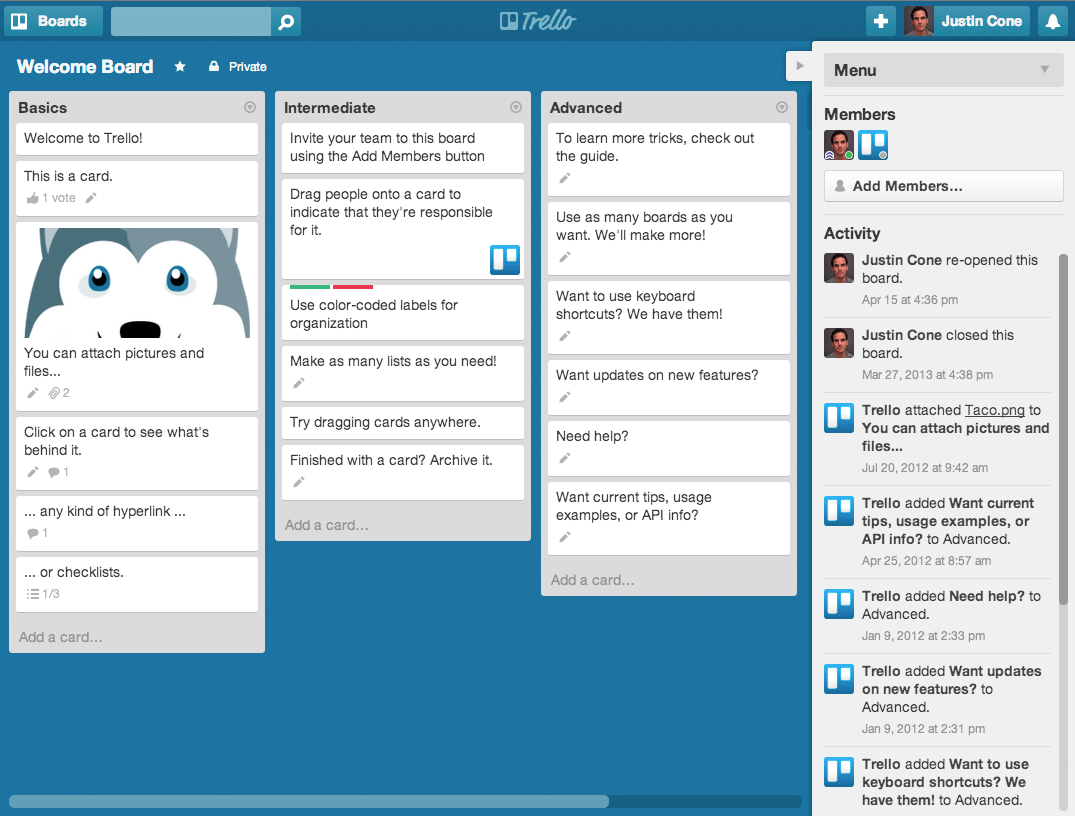
Trello is a Kanban-based project management tool that was founded in 2011 and is currently owned by Atlassian, who also own Jira. Trello is loved for its simplicity and ease of use, as the Kanban view is straightforward and easy to master for users of all skill levels.
Trello’s features include:
- Kanban and calendar style project management boards
- Ability to add comments, due dates, and attachments to action cards
- Built-in workflow automation capabilities
- Custom fields
- Custom backgrounds and stickers
Pricing for Trello: Starts with a free version, and gets up to over $17 per user at an enterprise level.
More info: Compare Hive as a Trello Alternative
3. Asana
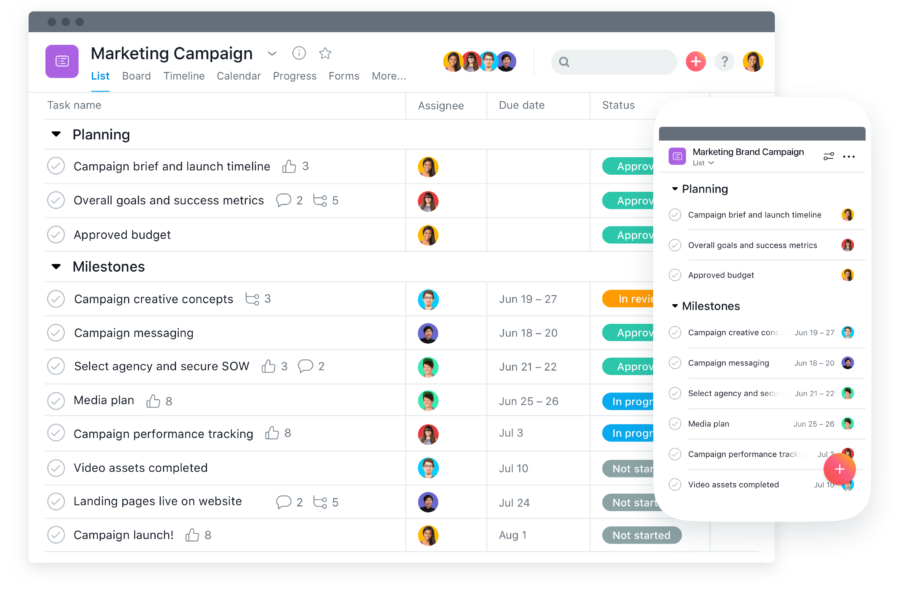
Asana is a visually appealing project management tool created by one of Facebook’s founders, and easily ranks among the best project management tools. Used by creatives and teams all over the world, Asana’s dynamic format and design keeps users engaged and active in the platform. Asana helps people and teams increase overall accountability and improve communication.
Asana’s features include:
- Flexible project views including list, timeline, and boards
- Ability to add comments, due dates, and attachments to action cards
- Real-time analytics and charts to map progress
- Workload tracking to help team members manage individual workloads
- Ability to set strategic goals in-platform
Pricing for Asana: Free for their basic plan, $10.99 for premium, and $25 per user for their business plan.
More info: Compare Hive as an Asana alternative
4. Airtable
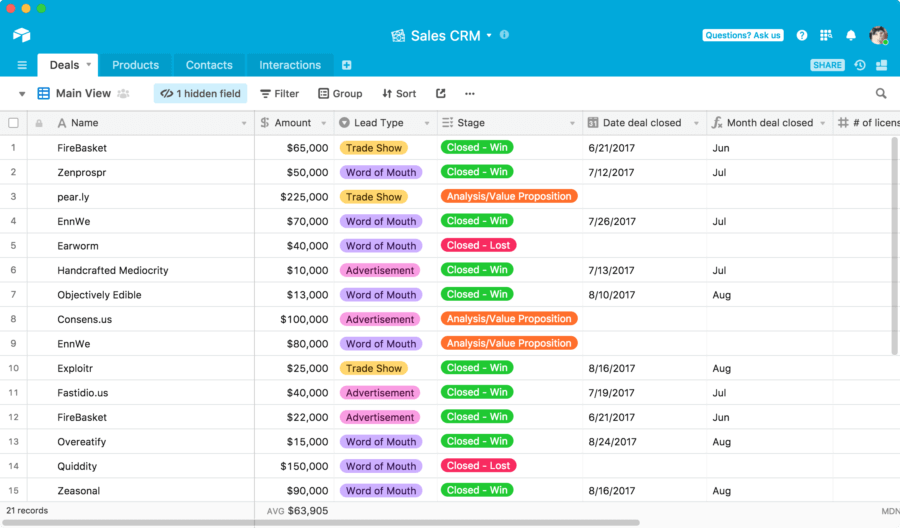
Airtable prides itself on giving users the power of a database with the familiarity of a spreadsheet. Based in an Excel-like table format, Airtable allows users to create customized databases in the basic grid format, which gives users a macro-level view of projects and tasks.
Airtable’s features include:
- Flexible project views like grid, calendar, gallery and Kanban view
- Ability to attach images, text notes, checkboxes and links to action cards
- Templates that allow you to populate pre-built out campaigns and project plans
- Automation capabilities
- 50 pre-built apps to supercharge your experience
Pricing for Airtable: “Essential” package is free, but paid plans start at $10 per user per month.
5. Basecamp
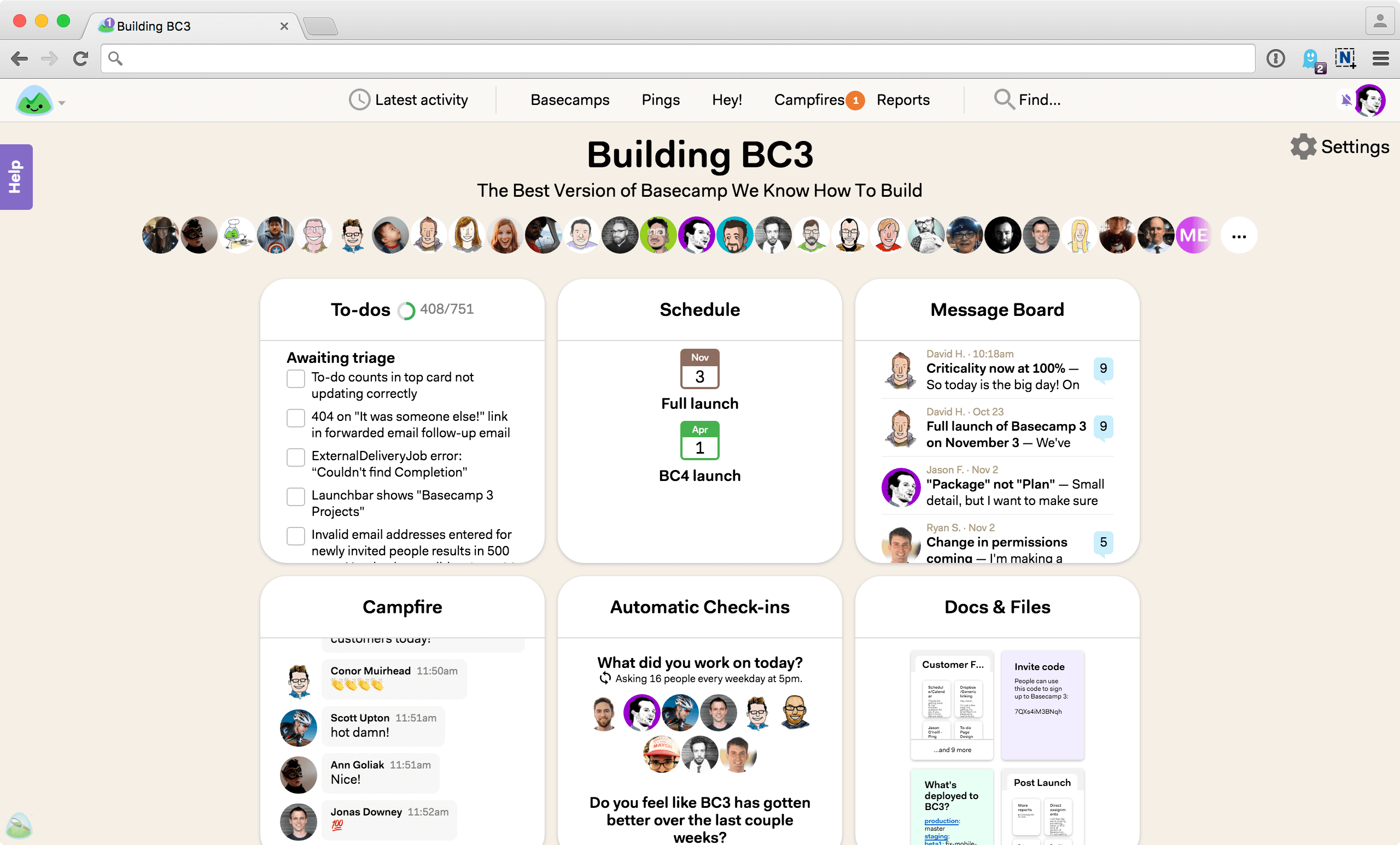
Basecamp is one of the oldest project management tools on the market. It was founded in 1999 and paved the way for many products in the productivity space. At its core, Basecamp is a project management and team collaboration platform for teams of all sizes. The building blocks of Basecamp are projects, under which all tasks, schedules, and messages are nested.
Basecamp features include:
- Projects and tasks that can be assigned to individuals or teams
- Message boards, tasks, schedule, and documents inside each project
- “My Stuff” section to sort individual’s tasks, bookmarks, drafts and schedule
- “Hill Charts” that provide missing context in projects and help course correct
Pricing for Basecamp: Starts at $99/month.
More info: Compare Hive as a Basecamp alternative
6. Notion
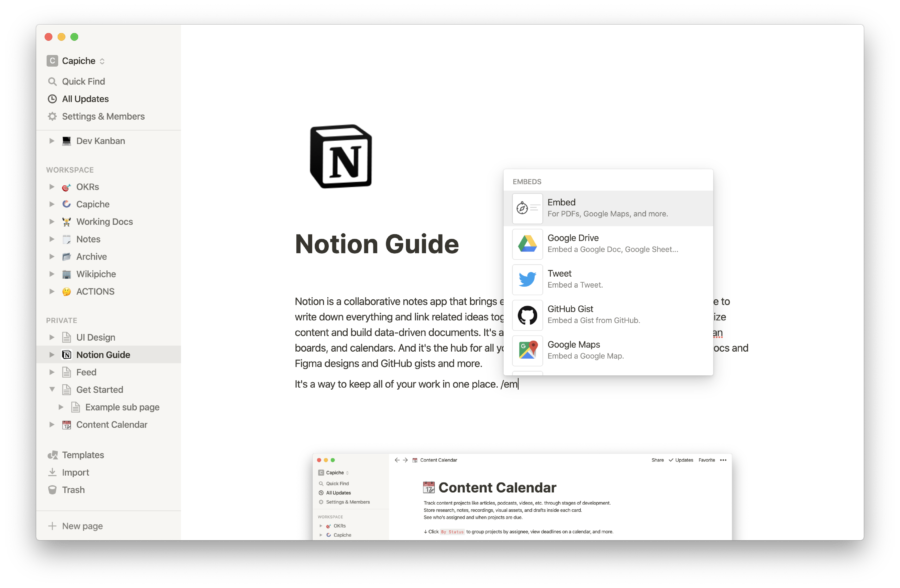
Notion could be a good option if you’re on a team that needs to store lots of documents and information in your project management tool, Notion could be a good option for you. Inside Notion, you’ll find a Team Wiki, Projects and Tasks, and Notes & Docs. The Team Wiki serves as workspace manual for your team, while projects, notes, docs and tasks help communicate vital team information.
Notion features include:
- Flexible project views including Kanban, list, and tables
- Meeting notes section to store documents and next steps
- Real-time collaboration via team comments and mentions
- Ability to embed over 500 tools inside Notion itself
- Web and desktop apps
Pricing for Notion: Starts at $0 for personal use, and goes up to $8 per user per month for a team.
7. Microsoft Teams

If you’re already active in the Microsoft Suite of products, Microsoft Teams could be a great choice for you. This tool allows you to chat, collaborate, communicate and meet seamlessly, which is even more important now that we’re all working remotely. Bonus: Did you know you can integrate Teams with more in-depth project management apps like Hive?
Teams features include:
- Chat with gifs, stickers, and more for easy virtual communication
- Meet virtually with teams of 2 to 10,000
- Collaborate on files in real-time using apps like Excel, Word and Powerpoint
- Integrations with hundreds of other apps like Hive
Pricing for Teams: Free for the basic plan
More info: Compare Hive as a Microsoft Teams alternative
8. Workfront

Workfront is a highly customizable tool that helps users manage projects. It is used primarily for enterprise work management, and is used by more than 3,000 organizations. This tool serves as a centralized platform for digital collaboration, and can be configured and reconfigured to support any team, region, project, or program across an enterprise. It also integrates with various services and tools for further customization.
Workfront features include:
- Setting up priorities for tasks and assigning them to specific team members
- Managing an entire project and reviewing its progress
- Integrations with creative applications, collaboration tools, and enterprise systems
- Extensive security program to protect an organization’s sensitive data
Pricing for Workfront: There are 4 different pricing plans: enterprise, business, pro, and team. You have to reach out for price quotes.
Overall, project management tools have been critical parts of many team’s transition to remote work, and will only become more valuable as workplaces continue to transform. Do you have any other apps that we should add to this list of best project management tools? Let us know in the comments below, and check back for updates to this list.
